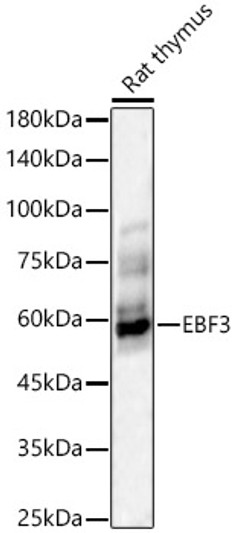| Tissue Specificity | Broadly expressed, with highest levels in skeletal muscle. |
| Post Translational Modifications | Non-enzymatic covalent modifications of reactive cysteines by electrophile metabolites inactivate the BCR(KEAP1) complex. Accumulation of fumarate promotes the formation of cysteine S-succination (S-(2-succinyl)cysteine), leading to inactivate the BCR(KEAP1) complex and promote NFE2L2/NRF2 nuclear accumulation and activation. Nitric oxide-dependent 8-Nitro-cGMP formation promotes cysteine guanylation (S-cGMP-cysteine), leading to NFE2L2/NRF2 nuclear accumulation and activation. Itaconate, an anti-inflammatory metabolite generated in response to lipopolysaccharide, alkylates cysteines, activating NFE2L2/NRF2. Methylglyoxal, a reactive metabolite that accumulates when the glycolytic enzyme PGK1 is inhibited, promotes formation of a methylimidazole cross-link between proximal Cys-151 and Arg-135 on another KEAP1 molecule, resulting in an inactive dimer that inactivates the BCR(KEAP1) complex. Degraded via a proteasomal-independent process during selective autophagy: interaction with phosphorylated SQSTM1/p62 sequesters KEAP1 in inclusion bodies, leading to its degradation. Auto-ubiquitinated by the BCR(KEAP1) complex. Quinone-induced oxidative stress, but not sulforaphane, increases its ubiquitination. Ubiquitination and subsequent degradation is most pronounced following prolonged exposure of cells to oxidative stress, particularly in glutathione-deficient cells that are highly susceptible to oxidative stress. Deubiquitinated by USP25.leading to stabilization. |
| Function | Substrate-specific adapter of a BCR (BTB-CUL3-RBX1) E3 ubiquitin ligase complex that regulates the response to oxidative stress by targeting NFE2L2/NRF2 for ubiquitination. KEAP1 acts as a key sensor of oxidative and electrophilic stress: in normal conditions, the BCR(KEAP1) complex mediates ubiquitination and degradation of NFE2L2/NRF2, a transcription factor regulating expression of many cytoprotective genes. In response to oxidative stress, different electrophile metabolites trigger non-enzymatic covalent modifications of highly reactive cysteine residues in KEAP1, leading to inactivate the ubiquitin ligase activity of the BCR(KEAP1) complex, promoting NFE2L2/NRF2 nuclear accumulation and expression of phase II detoxifying enzymes. In response to selective autophagy, KEAP1 is sequestered in inclusion bodies following its interaction with SQSTM1/p62, leading to inactivation of the BCR(KEAP1) complex and activation of NFE2L2/NRF2. The BCR(KEAP1) complex also mediates ubiquitination of SQSTM1/p62, increasing SQSTM1/p62 sequestering activity and degradation. The BCR(KEAP1) complex also targets BPTF and PGAM5 for ubiquitination and degradation by the proteasome. |
| Protein Name | Kelch-Like Ech-Associated Protein 1Cytosolic Inhibitor Of Nrf2Inrf2Kelch-Like Protein 19 |
| Database Links | Reactome: R-HSA-5689880Reactome: R-HSA-8951664Reactome: R-HSA-9679191Reactome: R-HSA-9755511Reactome: R-HSA-9759194Reactome: R-HSA-983168 |
| Cellular Localisation | CytoplasmNucleusMainly CytoplasmicIn Response To Selective AutophagyRelocalizes To Inclusion Bodies Following Interaction With Sqstm1/P62 |
| Alternative Antibody Names | Anti-Kelch-Like Ech-Associated Protein 1 antibodyAnti-Cytosolic Inhibitor Of Nrf2 antibodyAnti-Inrf2 antibodyAnti-Kelch-Like Protein 19 antibodyAnti-KEAP1 antibodyAnti-INRF2 antibodyAnti-KIAA0132 antibodyAnti-KLHL19 antibody |
Information sourced from Uniprot.org







